Your advertising portfolio is a process not a project
The very first advertising project you’ll take on with real stakes attached is your own creative portfolio. It sounds easy at first. Until you realise your client (which is you) has no idea what they’re doing. Fortunately, you have the opportunity to revise your work over and over until you get it right.
That’s why the first step to building your perfect student portfolio is to get started right now. Take it seriously. Don’t leave it to the last minute. Even if you’re in your first week of portfolio school, you should be working on your creative portfolio already.
Why? Because your first attempt will suck. Guaranteed. Your advertising portfolio has to be as professional, well thought through and compelling as possible. And you’ll need a few attempts to get it right.
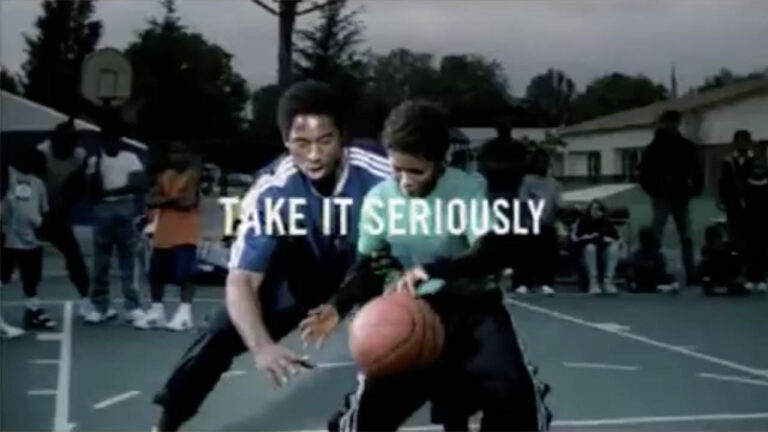
Table of Contents
Your portfolio itself has to be as great as the work inside it.
Your advertising portfolio is the culmination of an incredible amount of time, effort and sweat. Getting this right is non-negotiable. Don’t think that the quality of the work inside is the only thing that matters.
It’s an incredibly powerful document.
At its best, it does so much more than display your work. It’s a portal into your personality. It’s a warm, friendly calling card that gives the reader an idea of who you are and how you see the world.
Which means that when you do walk in to meet that person for the first time, something about you is already feels familiar. When the recruiter puts you and your advertising portfolio together, the ideal response should be ‘yeah, that makes sense’.
The professionalism of your portfolio rubs off on you
You actually need two portfolios
As well as your website, you’ll also need an emailable pdf portfolio you can send to whomever you are cold-calling. As well, it’s a good idea to have your pdf loaded onto an iPad when you go for an interview in an agency.
You’ll avoid having to hook up to the internet, or having to ask the interviewer to look it up on their computer. If you need to answer any questions about your work, it’s close at hand and loaded up already.
It’s a professional touch that will not go un-noticed.
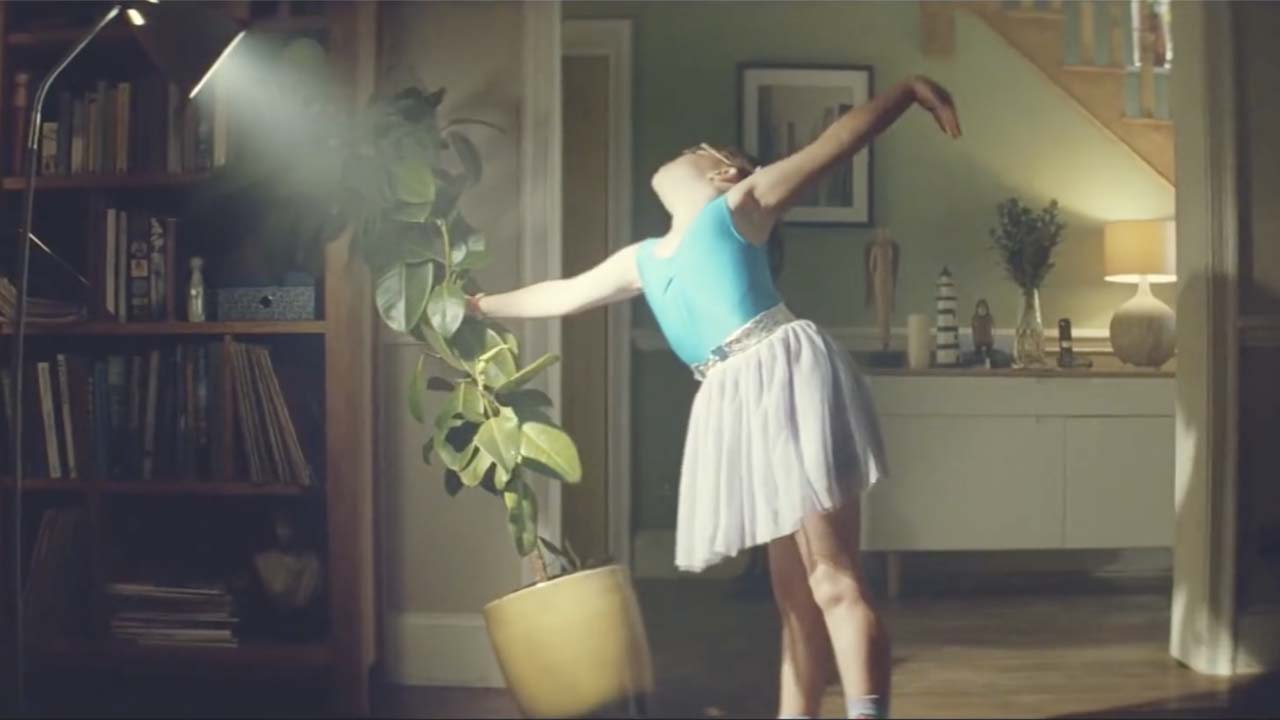
Are you an Art Director or Copywriter?
This matters. It affects the way that you will approach the evolution of your advertising portfolio. In fact it matters so much that we’ve created two seperate articles about it for you to read. Creating the ideal Art Director portfolio, and building the perfect copywriter portfolio. Nonetheless, the important thing is that however you specialise as a creative you need to start immediately. Because although your first attempt at a portfolio will suck, your second will be a bit better. And your third will be better still.
The danger for a student right now is that you will be focusing so much on the projects that will form the content of your portfolio, that you’ll neglect the folio itself. Think of it this way. The most amazingly designed interface and beautifully written ‘About Me’ section might not by themselves get you your dream job. But a badly presented portfolio could very easily cost you your dream job.

Start your portfolio today. Even if you have no work to show.
Buy your domain name if you haven’t already
Keep the name simple. Use your name in there if you can. Of course, that is easier if your name is exotic, long and unpronounceable. Harder if you are John Smith.
Unless you are already highly web literate, you’re more likely to gravitate towards Squarespace or Wix to build your site. Both are easy to use and have plenty of templates that are well suited to portfolio sites. The other benefit is that you will be able to buy your domain name from them and set up your hosting all in the same place. You could save a few dollars purchasing them separately, but the convenience of having them in the same place is worth it.
I’ve personally found Squarespace a little more intuitive. As you become more confident on the platform, there are great tutorials that can work you through any custom bits and pieces you might want to add. But if you choose Wix or another platform you might be comfortable with (A wordpress page builder, or a no-code builder such as WebFlow), go for it.
Your ‘About Me’ page is a great page to start
Ad creatives are story-tellers. This is where you tell your own story, so you’d better do a great job of it.
You’d be surprised to hear it, but a bunch of creative directors and recruiters head straight to the ‘About Me’ section when they visit a junior creative’s site. They want to know what you’re into, and what you like. It’s a great place to give someone a sense of who you are.
So write this first. Like every part of your advertising portfolio, your first attempt is going to suck. It’s much harder than you think to strike the right balance with your own tone of voice. There is a line somewhere between individuality and relatability to be straddled. Somewhere in there words is a unique, compelling personal brand. It is going to be much harder to nail this than you think.
The more personal your website feels, the more potential clients and employers will feel like they know you. Make your personality the cornerstone of your brand.
Not too weird. Not too dull. Give a glimpse into who you are outside advertising as well. Do you like to play the drums, for example? What is it that makes you unique? Once you nail that written voice, it will serve you well as you revise this section throughout your entire career.
Don’t forget mobile when setting up your site
If a recruiter is checking out your portfolio, odds are they’ll see your work on a desktop. But a creative director going from meeting to meeting might only have time to view your ad portfolio on their phone in a taxi or scoffing a sandwich.
Right from the start, design your portfolio ‘mobile first’.
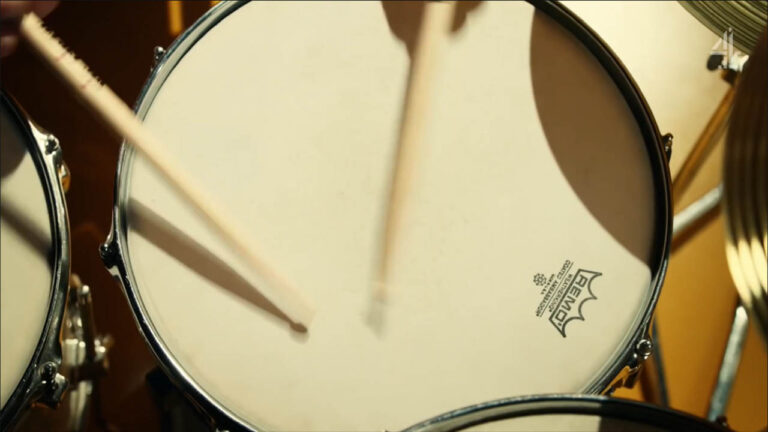
Ad schools often link to graduate portfolios.
Take a look at the standard of work that’s coming out of the top schools, but most importantly pay attention to how the best sites are structured, how the case studies are worded and broken up into sections.
Take a look at recent portfolios from Miami Ad School, VCU Brandcenter, The Creative Circus and Texas Creative for starters. (All great schools to learn advertising by the way… if you want to know more about their individual pros and cons, check out our eBook).
Top creatives have their portfolios online too
If you see a piece of work that you find particularly inspiring, google the writer and art director. Nine times out of ten you’ll find their personal creative portfolio online. Understanding how creatives that you aspire to emulate present themselves is only going to help.
Look at portfolios outside of advertising
In particular, look at the way UX / UI designers present their work. They are more interesting than illustrators, photographers or any other creative discipline where the end result speaks for itself.
Of all the design disciplines, I’ve found that UX designers are the best at presenting their case studies in easy to understand and visually compelling ways. And that’s because solving complex business problems is at the heart of what they do.
A word of warning. Don’t try to go toe to toe with their technical web design abilities. Go straight to their case studies. Their information hierarchy and explanations of how their creative solution solved the problem given to them is what you are looking for. Advertising case studies are unlikely to go into the same depth but you can learn a lot.
Here are a few examples of some interesting, but relevant and accessible, UX portfolios: Karolis Kosas, Alex Lakas and Samuel Medvedowsky. Go to Behance for more. Remember, consistently adding to your folio will save you a lot of hassle when that next opportunity comes.
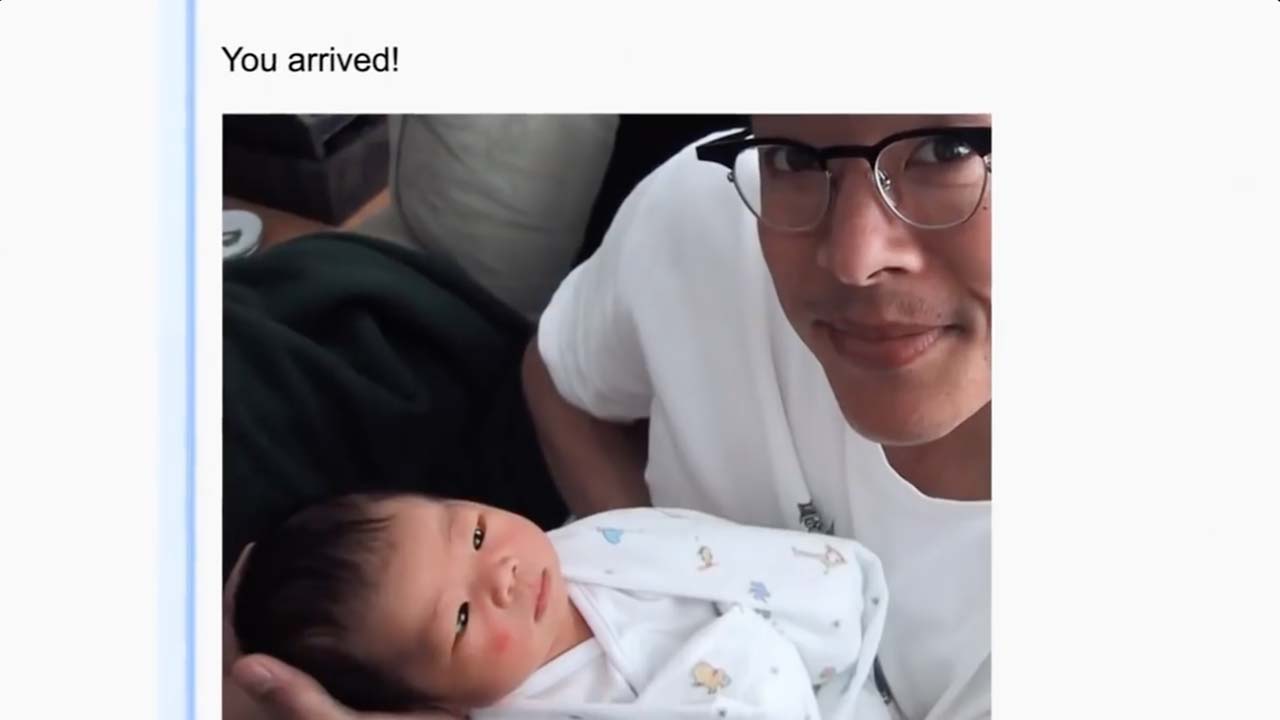
Make your advertising portfolio a monthly habit
Many creatives make a point to refresh their portfolios at regular intervals. Some more senior, established writers and art directors might only shuffle their portfolio around yearly. However, it’s a good idea to work on your folio more consistently when you are starting out.
As you develop your skills, your website should reflect that. Make revisions and updates. Take old projects off your site as you complete newer, fresher ones. Your portfolio website is a work in progress and always will be. No matter how long you’ve been in the industry.
An art director I know made a point of spending an evening on his folio every month. Always the day before he received his pay. It’s the one day of the month when you are least likely to have money left over to spend on going out, so a night at home improving your portfolio is time well spent.
Practice writing case-studies whenever you can
When you are starting out, create a case-study for every piece of work that you make in your ad or portfolio school. Even if you’re a little disappointed with how a piece of work turned out. You might find it can even help understand what didn’t work with that ad.
Writing case-studies forces you to objectively analyse your own work and justify your own creative process and output. It’s an important journey to take as you mature as a copywriter or art director. It will also provide clues to the best way to present the work and talk about it when you are face to face with a person looking to hire you.
Case-study writing is an important skill. Honestly, it doesn’t come naturally to anyone. You can only improve it with practise.
An Advertising Portfolio checklist
Is your portfolio easy to navigate?
First, ensure that you portfolio loads quickly and that all of your video content plays immediately. Creative directors are short on time and incredibly impatient with slow websites. Squarespace are very good at optimising for speed. But if you choose a different platform, make sure you optimize for speed.
Next, ensure that the design of your site makes it easy to navigate to other projects as well as your ‘About Me’ and ‘Contact’ sections.
Did you include a surprise?
Make sure there is something personal you’ve been working on. Art directors, have you designed a font? Or do you have another hobby you can showcase in your about me section?
Did you shoot a segment on parkour for YouTube? Do you have a funny TikTok channel? What other writing have you done? Can you rap? Have you had a poem published? If you really want to stand out, something that displays creative curiosity outside of advertising is incredibly valuable.
Did you purge all your weak campaigns?
The ideal number of campaigns in your portfolio website is however many good campaigns you have. (Although I’d be worried if you had fewer than five).
Get a gauge on the quality of each individual project from people you trust, and if there is one project that you are just including to fill out the folio, but you aren’t sure if it quite up to standard – leave it out until you have it fixed.
Sure, there might be a good idea in its kernel. But until you have figured out how to execute it properly to make it great, it’s only going to make you look sloppy.
Is your best project the easiest to find?
Let your best campaign make the first impression, and set the tone for the rest of your portfolio. It is very easier to close a tab in a browser window, so you need to get the viewer nodding as quickly as possible, and interested in knowing more. Choose projects that showcase your strengths. You are only as good as your weakest piece.
Are your ideas fully developed?
Creative directors don’t want to hire people who are able to come up with the start of a campaign. They are looking for writers and art directors that can take ideas to the next level. Don’t assume that the reader can see the larger potential of your ideas for themselves. Show the entire blown-out campaign. Don’t just stop at the one piece but go a little bit further and push it as far as you can.
Do your case studies make sense?
The ability to talk about the work and to articulate an idea is a valued commodity in a junior creative. Remember, though, that you are presenting each campaign to someone that has no background to the brief at all. You’ve been living with the work for a long time, so you’ve created logical shortcuts when you think about it.
Make sure that your case studies explain the context of the work in a way that someone who hasn’t seen the brief before can understand.
Have you demonstrated your craft skills effectively?
Copywriters will need to show deftness with language beyond headlines. An employer will need to know that you can manage all lengths of copy, and different media formats. Can you write snappy social copy as well as persuasive, engaging blogposts or emails? You need to prove this to the creative director looking to hire you. The truth is, you will not be leading giant multi-national campaigns straight out of college. An employer needs to know that they can rely on you for some of the less glamorous, but very important, jobs that need to be done in the agency.
The same goes for Art Directors. Though junior Art Directors should be focusing on their work displaying a variety of styles. You need to show that you can manage different visual tones of voice and create work that will appeal to different target markets. If your campaigns look similar (eg. big image / small headline format), the viewer will quickly get bored no matter how good your ideas are.
Did you spell check?
A spelling mistake is an enormous stumble your portfolio might not recover from. Do you want the creative director to remember your work? Or your spelling mistake? Watch this classic superbowl Tide ad below and you’ll understand the importance of getting this right.
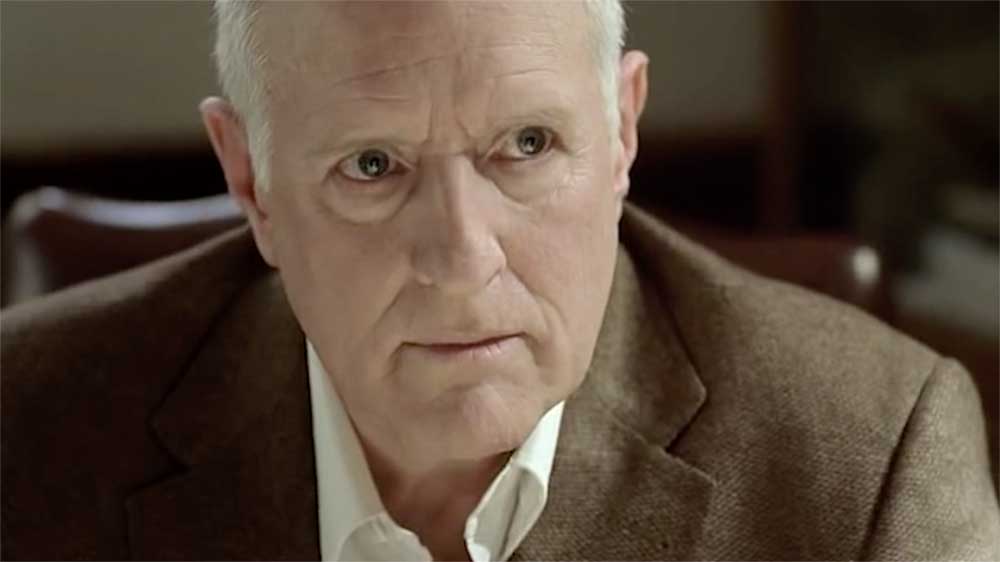
Things to do
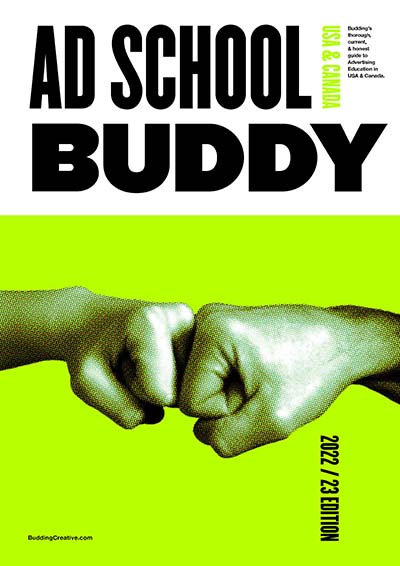
The Ad School Buddy
The complete guide. Undergrad, portfolio, grad, incubators and more.
More Articles
The Ad School Buddy
To make it as a professional ad creative, your choice of school is key. This is the most comprehensive guide to creative education in North America by far.






